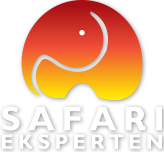Swakopmund & Walvis Bay
These two towns are the two most easily accessible settlements on Namibia’s long Atlantic Ocean coastline. They are nearly 350km west of the capital city, Windhoek, mainly along good asphalt roads - with some short sections of gravel roads in the northern part of Namib-Naukluft National park. Safari tours often visit these towns as a connecting link between the Namib desert’s impressive sand dunes around Sossusvlei to the south, and the northwestern Skeleton Coast National park and the beautiful, and more densely populated by animals, stone- and gravel deserts around Twyfelfontein and Palmwag.
The drives between both of these destinations and Swakopmund are long, so we therefore recommend spending two nights on the coast. There is plenty to see out here, where the desert meets the cool and sometimes rough Atlantic Ocean. A number or protected lagoons along the coast have plentiful birdlife, including flamingos, pelicans and many wading birds, while the world’s tallest sand dune, Dune 7, some 388m high, can be found close to the sea near Walvis Bay. It is also here at Walvis Bay that you can take part in excellent whale- and dolphin safaris. You can see many dolphins, fur seals and seabirds all year round here, but during the period from June to November they are joined by large humpback whales and southern right whales. Of the two towns Walvis Bay is perhaps the least charming because of its large industrial harbour, while Swakopmund is the more attractive, with many fine houses that testify to its past as a German colony.
Highlights:
- An attractive stop-over on the Atlantic Ocean between Namibia’s southern and northern safari hotspots
- Driving close to bird-filled lagoons near the world’s tallest sand dune
- Fine whale and dolphin watching safaris
High Season: June to March
These attractions can be seen on the following tours













